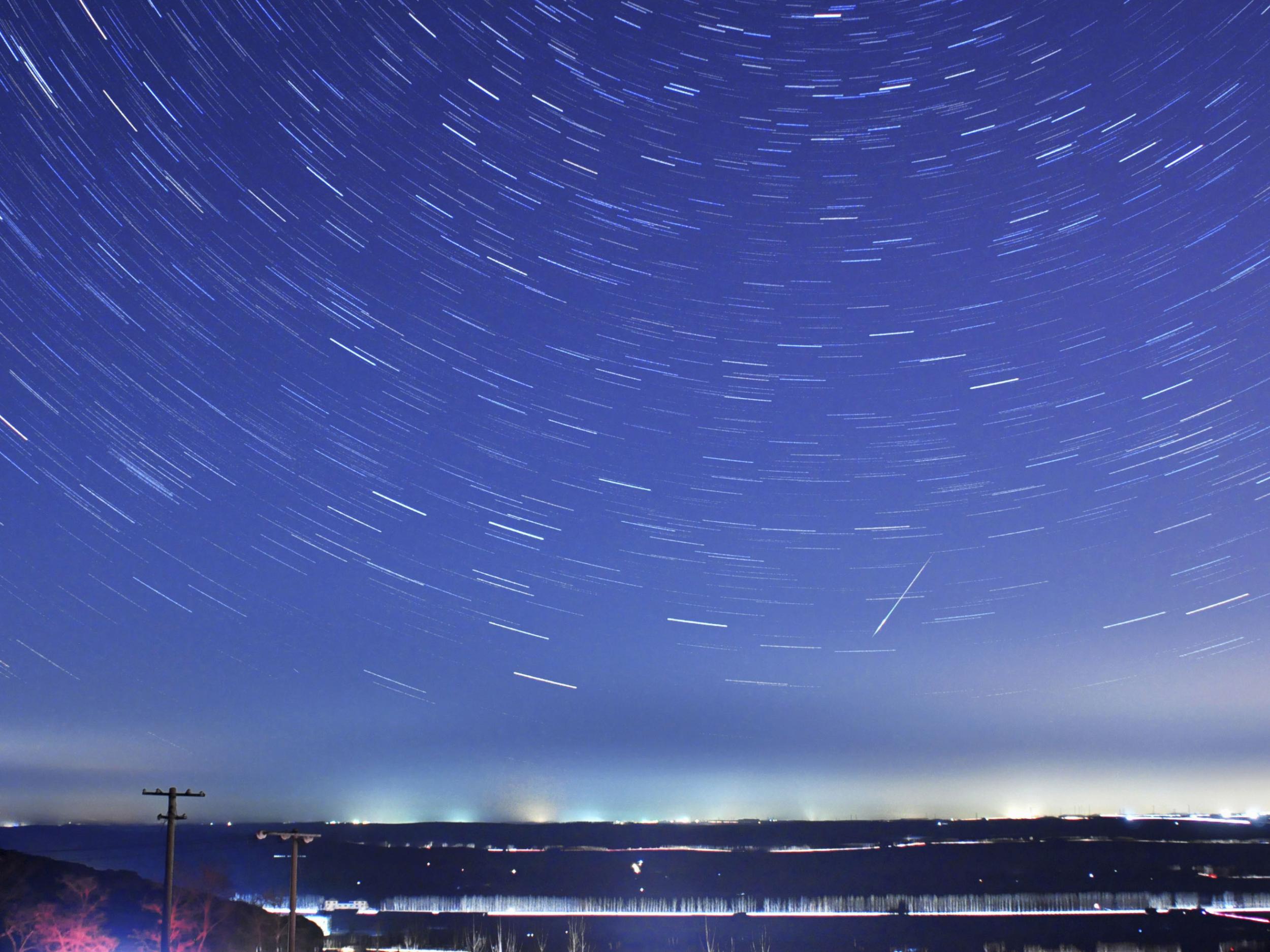Quadrantid meteor shower: Where and when to see it
Bad weather and a bright Moon could ruin celestial spectacle

Your support helps us to tell the story
From reproductive rights to climate change to Big Tech, The Independent is on the ground when the story is developing. Whether it's investigating the financials of Elon Musk's pro-Trump PAC or producing our latest documentary, 'The A Word', which shines a light on the American women fighting for reproductive rights, we know how important it is to parse out the facts from the messaging.
At such a critical moment in US history, we need reporters on the ground. Your donation allows us to keep sending journalists to speak to both sides of the story.
The Independent is trusted by Americans across the entire political spectrum. And unlike many other quality news outlets, we choose not to lock Americans out of our reporting and analysis with paywalls. We believe quality journalism should be available to everyone, paid for by those who can afford it.
Your support makes all the difference.The Quadrantid meteor shower is coming – but it could be more difficult than ever to actually see it.
The celestial spectacle will peak overnight on 3-4 January. It is usually among the brightest and most consistent of meteor showers, making it a popular favourite for skywatchers.
This year, however, both bad weather and a bright Moon threaten to get in the way of the view. There are plenty of ways to maximise your chance of seeing something, however, by improving your view.
The Quadrantids are unusual because they have a relatively short, sharp peak, which lasts only a few hours rather than a couple of days, as with many other meteor showers. Though the full period of the shower runs from 28 December to 12 January, the best night by far is that of 3-4 January, and you might miss it otherwise.
The bad news is that for those in the UK and Ireland, almost all of the sky will be blocked out by cloud for almost all of the night. While there will be some breaks in the cover later on Wednesday morning, those are likely to be short and not available to everyone, according to the Met Office’s cloud cover forecast.
What’s more, the upcoming full Moon – which falls on Friday, 6 January – will also threaten to cause problems. The light from the bright Moon could interfere with the streaks of any meteors, making them harder to spot.
None of that means that there will be no chance of seeing any meteors as part of the Quadrantids. But it does mean that the usual advice on ensuring that you choose the best place and way to see the meteor shower is even more apt.
Watching for meteor showers is largely a matter of patience, for at least two reasons: you need to wait for any lights to actually appear in the night sky, but you also need to ensure that your eyes are adjusted to the dark so that you can see them. As such, whenever you head out to view them do so with everything you need to stay comfortable and warm for a long time.
It is also key to find somewhere safe that is far from street lights and other light pollution that might get in the way of the light from the meteor shower. With such a bright Moon, you might already struggle to see amid the glare, so minimising any extra light could be key.
It is also useful to get into a wide open space so that you can see as much of the sky as possible. Though the meteors appear to radiate from the constellation Boötes – which includes the old constellation Quadrans Muralis and gives them their name – they will appear all over the sky, so a bigger view means a higher chance of seeing one.
Join our commenting forum
Join thought-provoking conversations, follow other Independent readers and see their replies
Comments